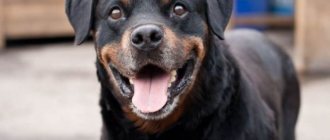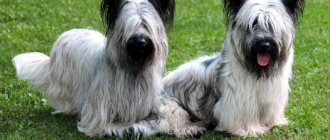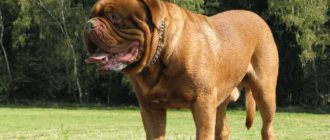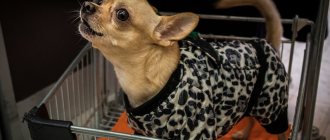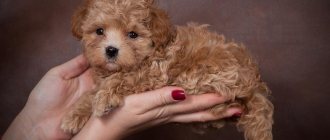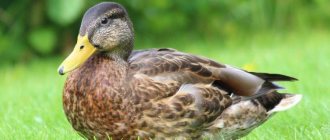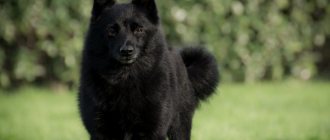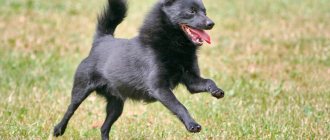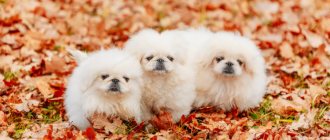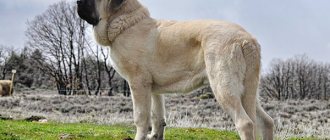Raising and training the Portuguese
When starting to train a “Portuguese”, you need to understand that this animal is quite stubborn, although it really loves the training process.
Experts recommend starting the educational process as early as two months - even at this age, smart dogs are able to understand and correctly execute basic commands and begin learning manners
It is very important to socialize the “water Portuguese” early and correctly, introducing him to his relatives, people, cats and birds
It is especially important for further training to become acquainted with well-bred representatives of this breed - such friendship will allow him to quickly assimilate the required knowledge. In addition, experienced dogs will teach young people to curb their curiosity. Portuguese dogs should be trained by professionals, although not the most experienced owner can cope with a pet.
Full training begins at six months of age. Dumb repetition of a command is not a method that suits these smart animals. They need tasks that require ingenuity: finding an apple in the grass or chasing fish in a pond. Each lesson should be aimed not only at developing physical fitness, but also at improving natural skills and intelligence
Portuguese dogs should be trained by professionals, although not the most experienced owner can cope with a pet. Full training begins at six months of age. Dumb repetition of a command is not a method that suits these smart animals. They need tasks that require ingenuity: finding an apple in the grass or chasing fish in a pond. Each lesson should be aimed not only at developing physical fitness, but also at improving natural skills and intelligence.
Exercise is very important for this breed. It is necessary to walk your pet at least 90 minutes a day. Moreover, the walk should be as active as possible: running, jumping, games, training, communication with relatives. The dog should go for walks at the same time in the morning and in the evening.
It is important to follow the regime, but at the same time diversify the walking places (pay attention to the change in the type of soil)
Many representatives of this breed love to swim, so in the summer, take your dog to a pond more often.
You can train your dog not only with classic sports (cycling or jogging), but also with more extravagant ones: agility and obedience.
The Portuguese Waterdog is a working animal. He is easy to learn and quickly learns the necessary skills.
It is important to consider some features:
- the dog prefers to obey one owner - the leader of the “pack”; it will obey this person unquestioningly;
- there is no need to punish them, since they grasp everything on the fly;
- if unfairly punished, he may become offended and refuse further training, and sometimes he may run away from the training field;
- the dog is disgusted by “lisping”, she prefers a respectful, almost partner-like attitude;
- does not like equipment: leash, muzzle, collar (the dog must be trained to wear equipment);
- loves various types of rewards: praise and treats.
Care and maintenance
The Dogo Canary can live with equal success and comfort in a city apartment and in a country house with a fenced area. Keeping him on a chain and in an outdoor enclosure is undesirable, but acceptable in the warm season.
Teeth must be examined once every 2-3 weeks to monitor the formation of tartar and the integrity of the enamel. The presence of yellow plaque indicates the onset of dental problems. To prevent mineralization, it is recommended to use special pastes or weekly include bones and cartilage in the diet, which promote self-cleaning of the dentition.
Eyes and ears require cleaning as they become dirty, usually once every 2-3 days
Increased attention should be paid to undocked ears.
The claws must be shortened with a nail clipper, as they do not grind down on their own. Since the procedure is unpleasant, the pet must be accustomed to it from puppyhood.
Circumcision is carried out very carefully so as not to damage the blood vessel. The Dogo Canario's nails are dark in color, so it is recommended to shorten them in small pieces.
Nutrition
It is recommended to feed most service and working dogs natural food. This fully applies to the Dogo Canario.
Products that need to be included in the diet:
- Beef, chicken, turkey.
- Sea fish.
- Beef bones, cartilage.
- Complex carbohydrates – rice, buckwheat.
- Fermented milk products, cottage cheese, kefir.
- Boiled eggs.
- Vegetables – carrots, cabbage; fruits - apples.
Considering the fact that the Dogo Canary is not widespread enough in Russia and the CIS countries, it is recommended to check with the breeder about the food standards for a puppy and an adult dog. If this is not possible, it is advisable to feed the dog premium and super premium dry food - Bosch, Acana, Hill's, Eucanuba, Brit Care, Royal Canin. The manufacturer indicates the serving size on the packaging.
Health
Caring for the health of the Dogo Canario does not require increased attention from its owner. Pets are strong, strong, hardy animals that rarely get sick. They must be kept away from drafts and avoid prolonged exposure to direct sunlight during hot periods.
In order to prevent your pet from getting sick, it is imperative to follow the feeding regime, as well as correctly dose physical activity. Thus, before the age of 7-8 months, it is recommended to reduce exercises that can lead to damage to joints and ligaments - jumping, climbing stairs.
Unfortunately, Dogo Canarios are not long-lived. The average age is 9-11 years.
Vaccinations
Vaccinations are an integral part of caring for the health of your Dogo Canario. The vaccination scheme consists of the following stages.
8-9 weeks – complex vaccine against plague, hepatitis, parvovirus enteritis, parainfluenza, leptospirosis.
- 12 weeks – revaccination with a complex vaccine + rabies vaccination.
- After vaccinations have been carried out during 1 year of life, vaccinations are given annually.
As a general rule for vaccinations, you need to make sure that the puppy is healthy. Also, the vaccine is not given during the period of changing teeth from milk to molars.
Diseases
The Dogo Canario has no predisposition to serious and dangerous diseases. Like all large dogs, the animals can suffer from hip dysplasia.
Walk
The Dogo Canario should be allowed to walk for a long time, at least 2 times a day. There is no need for intensive training with active exercises like “fetch”. However, to maintain good physical shape, your pet needs to be provided with long, leisurely walks. The ideal option would be free walking in the territory of your own country house.
Grooming
The Dogo Canario has practically no hair - it is very short and hard, fits tightly to the body, and there is no undercoat. Therefore, this coat is very easy to care for. You will need to clean it with a regular brush with coarse bristles, no more than once a week and in case of special contamination.
The exception is during shedding periods, when it is recommended to brush the dog daily. Bathing can be done 2 times a year, without using special shampoos.
Appearance
The Portuguese Podengo is a primitive type dog, almost square in size, with a strong, harmonious build and well-developed muscles. The breed is divided into three growth varieties: large, medium, small podengoo and two according to the type of coat: smooth-haired, wire-haired.
- Large: height - 55-70 cm, weight - 20-30 kg;
- Average: height - 40-54 cm, weight - 16-20 kg;
- Small: height - 23-39 cm, weight - 4-6 kg
The shape of the head resembles a tetrahedral pyramid. The muzzle is pointed, the upper lines of the muzzle and skull diverge. The skull is flat, almost straight in profile. Between the ears the forehead is flat. The occipital protuberance is clearly visible. The stop is weakly expressed. The muzzle is shorter than the skull, wide and pointed at the base, the bridge of the nose is straight. The lobe is conical, obliquely truncated, small in size, of any color, but darker than the main color. The lips fit tightly, dry, thin, the edges are well pigmented. Scissor bite. The jaws are well developed. The cheekbones are moderately prominent and dry. The eyes are small, set obliquely, and the color ranges from light to dark brown. The eyelids match the nose. The expression in the eyes is lively. The base of the ears is at the level of the upper corner of the eyes. Ears are mobile, straight, erect. Are in an upright position or slightly tilted forward. The auricle is thin, pointed, triangular in shape. The ears are longer than wide.
The neck is straight, proportional, dry, long, without dewlap. The case is strong. The topline is horizontal and straight. The back is long and straight. The loin is wide and straight. The croup is slightly sloping or straight, of medium length, wide. The chest is of moderate width, dropped to the elbows, the ribs are set obliquely, slightly rounded. The hemline is slightly tucked. The tail is set high, strong at the base, tapering to the tip, and of medium length. At rest it is usually lowered between the hind legs. When excited or in motion, it rises horizontally and carries itself in the shape of a sickle. The limbs are vertical, straight, dry, with well-defined muscles. The paws are round, with long, strong toes. The claws are strong and usually dark in color. The pads are dense.
The skin is dense and thin. Regardless of coat type, the hair texture is of medium thickness. There is no undercoat. Smooth-haired dogs have a thicker coat. Colors:
- Fawn and yellow in different shades with or without white markings;
- White with yellow or fawn spots;
- In small podengos, brown and black with or without white spots are also considered standard.
Labrador Retriever
This well-known water-loving breed is actually a mixture of English, Irish and Portuguese working breeds. Although its ancestors stretched ropes across the water, towed boats, and hauled fish and nets from the cold waters of the North Atlantic, much of the work Labradors do on the water today is more geared toward harvesting waterfowl for hunters. Their gentle, loyal and highly trainable nature makes them ideal for disabled guide dogs and wonderful family pets.
More about the Labrador Retriever breed
How to properly care for the breed?
It is imperative to monitor Lagotto so that the pet always remains healthy and cheerful. A dog's fur becomes very matted into unsightly clumps if it is not trimmed at least a couple of times a year. The water dog is not subject to shedding. In view of this, if the dog is kept indoors, then you can rest assured about cleanliness, because you will not have to clean up the scraps of fur left everywhere.
Nature has endowed Lagotto with a cheerful disposition. For this reason, dogs hate being bored while sitting in one place. Their temperament requires movement, therefore, the owner of Lagotto will have to set aside time every day for walks in the fresh air.
Water dogs should be kept in conditions that allow the animal to have its own personal space. A private country house with a garden plot is best suited for this purpose. There, the furry pet will definitely have somewhere to go.
The Lagotto's diet must be carefully balanced. Food should include all the vitamins necessary for the normal functioning of the body. Even carefully selected homemade products cannot always provide all organs with the necessary microelements, but specially developed dog foods are aimed at maintaining the dog’s health in good condition.
As has already been said above more than once, Lagotto is not averse to frolicking in the fresh air and chasing all kinds of living creatures. And sometimes curiosity leads to not very good consequences. A pet can easily catch an infectious disease, which, at best, will significantly worsen its overall health, and at worst, lead to death. To prevent this, it is imperative to vaccinate your pet, after consulting with a veterinarian.
How to feed
Every dog owner has a choice - to feed their pet with balanced natural food or ready-made industrial food. If you give preference to premium and super-premium food, the dog will be healthy and full of energy, and its coat will be shiny. As a rule, the formulations contain all the necessary vitamins, minerals, macro- and microelements for the full development of the pet.
Important! When feeding with ready-made industrial formulas of the highest quality, there is no need to additionally introduce vitamin-mineral complexes into the diet.
If preference is given to natural food, then a balanced diet is developed individually, and vitamins are also necessarily introduced. A veterinarian will help you cope with this task.
Premium ready-made industrial feed
Education and training
The Can Diagua is a breed that can learn easily and quickly. They freely master any training courses, trainings, and sports. Dogs can do any tricks. Puppies need challenging tasks. This is how they develop mental abilities. In case of possible failures, the puppy should be supported, otherwise he will lose interest in this type of exercise.
The Portuguese masters the commands the first time, but reinforcement is necessary. It is enough just once during a walk to make it clear where the toilet is, the puppy almost immediately begins to ask to go outside.
Raising a puppy begins as soon as it gets to its new home. You can include the basics of training and mandatory early socialization. Until the age of four months, the dog is trained independently, allowing it to communicate not only with representatives of other breeds, but also with other animals, especially cats.
It's a good idea to find a club that specializes in water rescue. Water-training breeds get along well with Portuguese dogs, since the functions of water-based dogs are very similar.
Read with this
Health and life expectancy
The Portuguese have good health, stamina and good immunity. They are free from a number of hereditary diseases that are common in other breeds, but are predisposed to ear infections, dental diseases and gastrointestinal problems if they are not properly cared for and maintained. The breed club recommends that breeding dogs undergo tests for hereditary ophthalmological diseases and hip dysplasia.
To maintain the health of a Portuguese dog, it is important to promptly treat it against parasites and vaccinate it against major infectious diseases. Life expectancy is usually 11-13 years.
History of appearance
The breed was first mentioned in 1297. The monk tells how a dog saved a drowning sailor. He describes it as covered in long, coarse black fur, with a tufted tail. This is actually the only mention of the breed - the dog was a companion to sailors who were not very literate in those days.
It is believed that the breed is very ancient; the ancestors of modern animals lived on the coast of the Iberian (Iberian) Peninsula, in Portugal. Portuguese sailors at that time were considered the best in Europe. They sailed on small ships, the crew was small, and part of this crew was a Portuguese dog.
These dogs are excellent divers and excellent swimmers. Their job was to retrieve torn nets and objects that had fallen into the water. Thanks to this, sailors did not risk their lives by diving into cold water or during strong currents. Animals also carried notes from one ship to another - they were a kind of means of communication. The Portuguese dogs did not have a guard function, but in times of danger they could easily make noise. At that time this breed was found in all the ports and coasts of Portugal. The sailors themselves called them “can diagua” - a water dog, sometimes a blue water dog.
For hundreds of years, dogs served faithfully in the maritime industry, but over time their skills became unnecessary. Small ships stopped sailing, and means of communication made it possible to communicate at a distance. Because of this, the breed was on the verge of extinction. Since 1930, the revival of the breed was taken over by Vasco Bensuade, a wealthy magnate who owns many ships and shipyards, thanks to which the process of restoring the breed was quick and successful.
Bensuade created a nursery in which water dogs from all over the country began to gather. But, despite the successful and fairly rapid revival, the Portuguese breed did not gain popularity. Currently, new interest has flared up in her, especially after former US President Barack Obama got himself such a dog.
In what conditions should you keep your pet?
The optimal place for a Portuguese to live would be a home with large open spaces for playing and running. But it would be wrong to keep a dog outside for a whole year - the animal does not tolerate heat and cold well.
The apartment is also suitable for keeping a Can Diagua, but the dog will require a fair amount of time for daily jogging and walking. In this case, there is a guarantee that the animal will not destroy the furniture in the apartment, trying to get rid of excess energy.
The following dog breeds will feel best in apartment conditions: Pekingese, pug, Pomeranian, dachshund, Yorkshire terrier, Russian toy terrier, French bulldog, Chihuahua, Scotch terrier.
The pet needs to see its owner often and regularly. Without communication with him, alone, the animal quickly runs wild and aggression begins to appear.
Features of the breed and character of the Portuguese Water Dog
In photos, the Portuguese Water Dog often looks like a poodle. Their similarity is not limited only to external impressions - just like the poodle, the water dog has soft, non-shedding, water-repellent, odorless hair, an even, cheerful character, ease of training and tirelessness.
The breed is also distinguished by very good health and high resistance to stress, not to mention the fact that water dogs easily adapt to absolutely any living conditions.
The breed of dog is the Portuguese Water Dog, this is the only breed that, in addition to hunting “under guns,” was used until the mid-19th century by professional fishermen to drive schools of fish into nets, that is, in other words, for more effective fishing.
The abundance of fish in the markets not only of the Portuguese coast, but also of the coastal cities of France, Spain, northern Africa and others, was largely ensured by these dogs.
They were kept on fairly large fishing schooners, which went fishing all the way to the coast of Iceland, in search of large schools of cod and other fish.
Thanks to such raids, a breed appeared in Britain - the Irish water spaniel, which was descended from crossing Portuguese water spaniels with local varieties of spaniels.
The breed almost disappeared by the beginning of the 20th century, and would have sunk into history if Vasco Bensuade, a descendant of a fishing dynasty, a major magnate and practically a monopolist of the fishing industry in Portugal at that time, had not taken up the task of preserving and popularizing animals in 1930, thanks to with which his ancestors made very large capital.
The war somewhat delayed Vasco Bensuade's plans, and official world breed standards, as well as the very existence of this breed, were approved only in 1954. However, the dogs did not become particularly popular due to their external resemblance to poodles.
Previously, Portuguese water dogs carried information from ship to ship
The breed found its second wind in the USA, where it was included in the register of working dog breeds in 1983, and in 1984 the first Portuguese water dog kennel, located outside of Portugal itself, appeared in the States.
Today, the USA is a country where these dogs are very popular, and their breeding is in great demand. Portuguese merman are the pets of many American businessmen and politicians; for example, the former president of the country, Barack Obama, is among the fans of this breed.
Description of the Portuguese Water Dog breed (standard requirements)
The regulations regarding the standards of this breed have remained unchanged since they were approved in Britain in 1954. The main requirements for the standard relate to two parameters - height and weight. These indicators must correspond to the following values:
- height - from 50 cm to 60 cm for males, and from 40 to 53 for females; - weight - from 20 kg to 25 kg for males, and from 15 kg to 22 kg for females.
The remaining requirements are of a general nature - animals must have strong, pronounced muscles, have a lean appearance, fit into a “square” and be covered with lush, beautiful hair. Any color is allowed, the tail can be thrown over the back in a state of excitement.
The Portuguese Water Dog is often cut like a lion.
In the early 90s there was a time when attempts were made to make changes to the requirements for the standard regarding the color of dogs. It was supposed to be limited to black and brown, with white markings allowed, but these restrictions were not accepted.
The reasons for disqualification, both in the ring and in breeding for this breed, are: - pink spots on the skin, lips, nose, inside the mouth; - lack of proportional “square” outlines; - sagged in the line of the back.
Also, in European countries, albinos are culled at exhibitions, but in Asia and the USA, albinos are not disqualified.
Poodle
Despite its striking appearance, this dog was originally a hunting retriever. The fact is that the breed was bred as a water game hunter. Between the 16th and 18th centuries, poodles were used for water hunting throughout Europe and Russia. It was the poodle’s love of water that gave it its name: the German “Pudel” and the English “poodle” come from puddle (Pfuhl, Pfuetze), paddeln (to row with an oar).
This is a very intelligent breed that is easy to train, affectionate, and has a thick coat that is considered hypoallergenic.
Similar breeds by height and weight
Mudi Mudi (eng. Mudi) – Hungarian port...
schapendus
Schapendus is the main image...
Australian Kelpie Australian Kelpie (international name…
Kromforlander Kromforlander is one of the youngest…
Alapaha purebred bulldog Alapaha purebred bulldog or...
English Cocker Spaniel English Cocker Spaniel (international…
Manchester Terrier The Manchester Terrier is a rat dog...
Croatian Shepherd Dog Croatian Shepf…
Entlebucher Entlebucher Mountain Dog is a breed based on…
Clumber Spaniel The Clumber Spaniel is a breed that...
How much does it cost to own a dog?
You will initially have to spend a large amount of money on maintaining a dog. You need to purchase accessories for care. Further monthly expenses are 3-5 times lower; you only need to purchase food, care products and sometimes medicine. In addition to spending money, you need to consider how much attention and time the animal requires.
For preliminary calculations, you need to make a list of desirable and obligatory expenses. Divide the cost of each product by the number of months, and then add up the results. The main expense is feeding. Consider the characteristics of the breed. For example, a purebred representative of decorative breeds may need the services of a groomer.
The most expensive is the first year of maintenance. During this period, you need to make one-time purchases and pay for services. In subsequent years, stable expenses consist of spending on food, a veterinarian, shampoos, and antiparasitic agents.
If we add up the amount of one-time and permanent expenses, the first year requires an investment of 54,336, that is, 4,528 per month at a minimum. Subsequent years of maintenance require an investment of 3500/month.
Characteristics of the Portuguese Water Dog
The Water Portuguese is an excellent dog for active and cheerful people who often go out into nature and prefer physical activity - hiking, running, swimming, going down a fast river, hunting, fishing, etc. If you decide to get a dog of this breed, be prepared for the fact that you will have to regularly take the dog out into nature or into a wide area to run around and fool around with the pet. In closed enclosures or apartments, the dog gradually fades away, loses interest in food, and may even get sick. Remember that physical activity is one of the main conditions for the full development of an animal.
This is a very smart dog that constantly inspects the nearby territory, is able to independently assess the situation and intervene in ongoing events if necessary. The Portuguese has a very developed sense of smell, which even a bloodhound can envy. This makes the pet indispensable during the hunt. The dog is capable of tracking and catching even the fastest animal. Dogs of this breed have a very developed sense of devotion to their owner; the dog will do everything to make the person happy. At the same time, the high intelligence of an animal often exceeds human abilities, this should be taken into account. The owner of the Portuguese Water Dog must be smart, strong physically and mentally. If you don’t have time to train, this dog breed is not for you. If you don’t direct the animal’s energy in a peaceful direction, the dog can start doing dirty tricks, damaging property, doing things out of spite, not following commands, etc.
We can say that the dog combines two amazing and contradictory qualities - devotion and at the same time independence. If the dog clearly knows the owner and respects him, he will do anything for the person, will carry out any commands and instructions. If a person gives in and shows disrespect to the dog in the form of physical punishment or indifference, the Portuguese can become uncontrollable and even aggressive. If you love and care for your dog, it will become a true friend and companion.
The Water Portuguese gets along well with children - he loves to spend hours with them, the dog's mischief and agility make it an indispensable friend for any child. The Portuguese Water Dog gets along well with other pets - it respects and does not offend them. Surprisingly, this particular breed of dog was chosen by doctors for the rehabilitation of people who suffered psychological trauma, loss of loved ones, etc. A dog senses a person’s mood and is able to support and feel sorry for him. If you are prone to stress and depression, be sure to get yourself such a pet - it will save you from bad thoughts.
Price
Buying a Portuguese Water Dog will not be a cheap pleasure; the price of a Portuguese Water Dog reaches 200,000 rubles.
And the question “where to buy a Portuguese water dog” is difficult to solve. Outside of the US, it is quite difficult to find a purebred puppy.
Character and behavior
The Portuguese Shepherd is an energetic and hardy dog with a balanced temperament. It has good adaptability to various living conditions, is unpretentious, obedient and intelligent. Training, as a rule, does not cause problems. Even in puppyhood, the Cerro de Aires grasps everything on the fly and tries to please its owner.
The Portuguese Shepherd is very inquisitive, nimble and attentive. A good watchman and security guard, he will not allow strangers, neither man nor animal, into his territory. Outside its borders, he behaves with restraint and calm. A well socialized dog does not show aggression unless absolutely necessary. Gets along with other animals. The Portuguese Shepherd is very attached to all family members, but chooses one person as its owner. The dog follows him like a shadow, but at the same time it cannot be called intrusive. Gets along well with children of all ages. She takes care of little ones and enjoys playing with older children.
Portuguese Shepherds are easy to train and master a wide variety of jobs; they can be shepherds and athletes. Various disciplines are suitable for them: agility, obedience, flyball, freestyle and others.
Portuguese Shepherds have a strong herding instinct. In terms of work, they are almost universal. They can graze small and large livestock, horses, and poultry. They do an excellent job of finding lost animals. They treat their charges with great care and respect, while being brave and strong enough to resist a predatory animal or an ill-wisher.
Key points in training
Training this breed is not a difficult task. Dogs are smart and obedient, learn easily and quickly, and can even jump through hoops and walk on their hind legs. They show remarkable results in agility and other dog sports.
Whippets are not stubborn; they love cleanliness and order. Raising them is not difficult, but you need to start from early childhood. The puppy needs to remember the rules of behavior in the family and on the street, learn the daily routine: feeding and walking.
In addition, it is important to know the basic commands: “near”, “place”, “sit”, “not allowed”. The animal must get used to walking on a leash and without it, and follow commands flawlessly, especially during a hunt. If you really need a pet as a hunting pet, then it is best to give it for training to knowledgeable people
They will teach the dog to correctly fetch game, listen to instincts, and monitor the actions of the owner.
If you really need a pet as a hunting dog, then it is best to give it to knowledgeable people for training. They will teach the dog to correctly fetch game, listen to instincts, and monitor the actions of the owner.
External standard can di agua
The Water Dog is an ancient indigenous breed of coastal Portugal. The appearance of the animal has changed little since its first description by a monk in the Middle Ages. A tall, handsome, proportionally built, muscular dog cannot but arouse admiration. The height at the withers of a purebred male reaches 57 centimeters, and body weight is 25 kg. Adult females are somewhat shorter and lighter: height - up to 52 centimeters, weight - up to 22 kg.
- The head
is large, but proportional to the body, wide in the skull. The frontal part and occipital protuberance are well defined. The stop is sharply defined. The muzzle is pronounced, strong, tapering towards the nose. The nose is wide. The color of the lobe depends on the color of the coat. Animals with black, black-and-white and white coats have a black nose; for dogs of brown color - brown (all shades). The lips are dense, without sagging. The inside of the mouth is either completely black or with large areas of dark brown or black. The jaws are well defined. The teeth of the “can di agua” are well developed and the fangs are large. The bite can be straight or scissor. - The eyes
are oval in shape, medium in size, set wide and slightly oblique. Eye color is black, dark brown or brown (depending on the color and shade of the coat). The look is very smart, insightful. - The ears
are set high, symmetrical, drooping, not too long, and shaped like a “heart.” - The neck
is short, muscular, straight, set high. - The body
of the water dog from Portugal is elongated, strong, stately, with a wide chest and tucked belly. The back is wide, muscular, with a straight line. The loin is short, merging into a strong and slightly sloping croup. - The tail
is low set, medium in length (slightly does not reach the hock), richly covered with fur. When cutting "like a lion" - the hair on the tail is cut short or the tail is completely bare, but in any of the options - with a "lion" tassel at the end. - The limbs
are straight, very muscular, medium or slightly longer in length. The toes, which have thin webs, are neatly gathered together. The paws are round in shape and somewhat flat. There may be dewclaws on the front legs, which must be removed to participate in championships. - Color.
The standards allow black, white and brown (all tones and shades) coat colors, as well as combinations of brown and black with white. Pure white coat color must be combined with a black nose, black lips and eyelids. Otherwise, the dog is considered an albino and is not allowed to participate in the championship.
As for wool, the Can di Agua has two types of coat: wavy and curly:
- The wavy version of the water dog has thick, long, shiny and durable fur that falls gently in waves over the dog's entire body.
- Curly version - the fur is dense, dense, has clear, dense to the touch, cylindrical curls throughout the animal’s body, of a rather tough quality. At the same time, long, wavy hair without curls is possible on the ears.
"Can di Agua" is often cut "like a lion", leaving the hair of the front legs untouched (and this is their difference from the haircut of poodles). The second (back) half of the body is cut very short (only a tassel on the tail remains), which makes the dog absolutely unlike anyone else.
Dog care
The coat of this breed grows slowly and shedding is not very pronounced. You need to regularly comb your hair with a soft brush, removing old hairs. This will prevent the formation of tangles.
The Spanish dog's coat is not prone to accumulating unpleasant odors, so it does not need frequent washing. Water procedures can be performed 2-3 times a year. To protect your pet's hair from moisture and dirt in bad weather, you should wear overalls. At the same time, the dog loves water very much, and if he has a desire to swim in the summer heat, he should be allowed to do so. After this, you need to wipe your pet with a towel.
The dog's long hair requires regular haircuts. If the dog does not participate in exhibitions, the hairstyle can be anything. If the pet is a participant in such events, then there are two haircut options - “Lion” and “Working”. The first option involves maximum shortening of the hairs on the back and middle parts of the body and muzzle. The head, neck, chest and tip of the tail remain intact. A “working” haircut involves shortening the bangs to a length that does not interfere with the dog’s vision. The fur throughout the body is trimmed evenly, and only the tip of the tail remains with long hairs.
Dog eye and ear hygiene should be done daily. For this purpose, you need to use cotton pads soaked in boiled water.
The teeth of representatives of the water breed are strong and healthy. However, you should not neglect regular mouth examinations at the veterinarian’s office. Teeth may become coated with plaque, and in this case you cannot do without a special brush.
In the summer, it is necessary to protect your pet from parasitic insects by putting a special collar on it. Also, do not forget about regular deworming.
How to feed?
The basis of your pet’s diet should be premium food or natural products. In the first case, the pet will not need additional vitamin and mineral complexes, and when eating natural products, you will have to take care of artificially enriching the products with useful substances.
Representatives of this breed spend a lot of energy during the day, so half of their diet should consist of protein foods. For meat, it is better to give preference to boiled beef, game, and chicken. Fermented milk products should be presented in the form of cottage cheese and cheese. The diet should also be supplemented with eggs, cereals, stewed vegetables and a small amount of seafood.
The dog needs to receive 3-4 servings of food per day. The amount of food consumed at one time should be small to avoid gastrointestinal problems.
A little history of the origin of the breed
From the name of the breed it is easy to understand that they come from Portugal. Already in the 16th and 17th centuries, hunters and fishermen raised strong, compact pets with fur that repelled water. These animals had to catch fish in a unique way, chase game and deliver messages from the ship to land.
Gratitude for the fact that the water dog ended up on the Iberian Peninsula should be sent to the Persian sailors. These dogs were mentioned as early as 600 BC. The ancient Romans nicknamed the ancestors of the Portuguese Water Dogs “fishing dogs.” In those days, the peninsula was inhabited by peasant herders. The imported dogs learned to protect herds and flocks, performing the duties of shepherds.
Researchers of the breed claim that the Irish Water Spaniel is a descendant of fishing dogs. These forced shepherds lived for a long time isolated from the world, in the mountains, where the breed was formed without the admixture of other breeds. This development is responsible for the stable identity of the gene pool, which is still a distinctive feature of the breed today. By the beginning of the 20th century, dogs, which had been helping humans for centuries, began to disappear. This is due to the decline of Portugal's fisheries.
In 1930, shipping magnate Dr. Vasco Bensuade, a dog lover, decided to preserve this interesting breed. It was thanks to his initiative that a club of fans of rare dogs appeared - from that moment on, mermen gained access to European exhibitions. Such an active social life led to the development and approval of a breed standard.
These curly-haired dogs are native to Portugal, where they were used for fishing.
Portuguese merman were brought to Europe in the mid-20th century. Already in 1954, several individuals came to England, where the breed was recognized by a large number of cynological federations. Since that time, the popularity of the breed has only increased, being recognized by almost all federations of dog breeders by the end of the 80s of the last century.
Brief historical background
The Portuguese Water Dog is an ancient working dog breed that is considered indigenous. It appeared in Portugal back in the Middle Ages (15th–17th centuries). According to one version, dogs came to the Iberian Peninsula from Persia approximately 500 BC, as evidenced by written references in documents of that time.
Animals were indispensable helpers for local residents and sailors. Excellent divers and swimmers, owners of water-repellent fur, thanks to which they could stay in cold water for a long time, the dogs skillfully drove fish into nets, caught prey that had fallen off the hook and brought it to the fisherman, and also helped to find torn off rigging, gear and scraps of nets. Smart and hardy dogs passed notes between fishing boats at sea and delivered correspondence from land to ships and back.
Portuguese women love water
Wasserhunds not only swim well, but also run very quickly, this quality helped them act as a gun dog and successfully chase down a fox or hare, as well as hunt ducks. Among other things, the water dog was a conscientious watchman; she diligently protected houses from thieves, and flocks of livestock from predators.
After the advent of the Industrial Revolution, at the beginning of the 20th century, the social class of Portuguese sailors began to rapidly disappear, and with it the Can Di Agua dogs. The breed line was on the verge of extinction. However, in the 30s of the last century, thanks to the efforts of the shipping magnate and great dog lover Vasco Bensuade, the breed was revived. In 1966, the first breed standard was written. In 1983, the Portuguese Water Dog was officially recognized and listed by the AKC (American Kennel Club). The Wasserhund was entered into the FCI register in April 2008: in group 8 (section 3 - water dogs) under number 37. This current standard is dated 03/30/2009.
Description of the breed
Due to the traditional lion haircut, the breed is sometimes confused with a poodle. But these are completely different dogs, similar only in their popular hairstyle.
Portuguese dogs are medium in size.
- The height of males is 50-57 centimeters at the withers.
- The height of females is 43-52 centimeters.
- The weight of males is 19-25 kilograms.
- The weight of females is 16-22 kilograms.
But thanks to their long and thick coat, dogs of this breed look larger and more massive. At the same time, a big advantage of the breed is that it does not shed at all. People who are allergic to dog hair do much better with Portuguese dogs than with other breeds. But animals are not completely hypoallergenic, so if you have allergies, it is better to check your reaction to a water dog.
The breed's coat type is divided into two types: wavy and curly. Species with different coats can interbreed. Both species have fur without undercoat and there should be no mane on the neck. There are two types of haircuts to participate in the show ring:
- Lion's - has been used since historical times. On the front part of the body the hair remains at a natural length, but on the back it is cut very short. A brush is left at the tip of the tail.
- Retriever is a fairly simple haircut in which the hair is cut close to the body and a tassel is also made on the tail.
The breed has five colors:
- Black.
- Brown.
- White.
- Black and white.
- Black-brown.
The most common are the black water dog and the black and white one.
a brief description of
- Other names: Portuguese Water Dog, Cão de Água Português, Portie, PWD, water dog, Portuguese;
- Height: up to 57 cm at the withers;
- Weight: up to 27.5 kg;
- Color: black, brown-chocolate solid, white spots on the chest are acceptable in both colors;
- Coat: glossy with a dense undercoat of two types – long with a wavy structure and short, thick;
- Life expectancy: up to 15 years;
- Advantages of the breed: Dogs have a high level of obedience and diligence. He enthusiastically carries out security and guard duty in any weather on water and on land. A typical representative of working dog breeds.
- Difficulties: Secretive individuals, especially dogs tend to hide their poor health and malaise. Most representatives of the breed have a grumpy character.
- Price: $2500.
Best articles: Does a cat bite and scratch when you pet it - reasons for aggressive behavior?
Breeds from the same group
- Australian (kangaroo) greyhound
- Australian Terrier
- Austrian Shorthaired Pinscher
- Azawakh
- Ainu (Hokkaido Inu, Ainu-ken, Hokkaido dog, Hokkaido)
- Akita Inu
- Alopekis
- Alaskan Malamute
- American Blue Gascony Hound (Big and Blue)
- American Indian dog
- American Cocker Spaniel
- American Staffordshire Terrier
- American Toy Terrier (American Toy Fox Terrier)
- American Foxhound (American Foxhound)
- Amur Laika (Indana)
- Anatolian Shepherd
- English Beagle
- English cocker spaniel
- English Pointer (Pointer)
- English Setter (Laverack)
- English Foxhound (Foxhound, American Foxhound)
- Dogo Argentino (Argentine Mastiff, Dogo Argentino)
- Artois Hound (Chien d'Artois)
- Ariège marriage (Ariege pointer, artesien Norman, bracque de Toulouse)
- Afghan Aboriginal Hound (Bakhmul)
- Afghan Hound (Afghan)
- Africanis (lion dogs)
- African hairless dog
- Affen pinscher (monkey pinscher)
- Bakhmul (Afghan Aboriginal Hound)
- Banjar Greyhound
- Basenji (Nyam Nyam Terrier)
- Basset Hound
- Batak Spitz (Pomeranian dog, Batak dog of Sumatra)
- Bedlington Terrier (Rothbury Terrier)
- Beagle Harrier
- Billy (Biya)
- Dogue de Bordeaux (Dogue de Aquitaine, French Mastiff)
- Bosnian Barrack (Bosanski Gonjic, Bosnian Rough-haired Hound, Ke
- Fila Brasileiro (Fila Brasileiro, Brazilian Mastiff, Brazilian Mol
- Breton fawn basset (Breton Basset, Red Breton Basset)
- Bourbon braque
- Buryat-Mongolian wolfhound (Hottosho)
- Wachtelhund (German Spaniel, German Quail Dog)
- Welsh Springer Spaniel
- Welsh Terrier
- Hungarian Greyhound (Magyar Agar)
- Hungarian Vizsla (Vizsla, Hungarian Shorthaired Pointer, Hungarian
- East Siberian Laika
- West Highland White Terrier (West Highland White Terrier, White Highland
- Hanoverian Hound
- Smooth Fox Terrier
- Blue Gascony Griffon
- Hamilton's Hound (Hamiltonstövare)
- Greyhound (English greyhound)
- Greenland dog (Greenland dog)
- Greek hare hound (Hellenic Iknilatis)
- Griffon cortalsa (French Wirehaired Pointer Griffon)
- Jack Russell Terrier
- Jämtland Laika (Emthund, Yemthund, Yamthund, or Swedish Elkhound,
- Wire Fox Terrier
- West Siberian Laika
- Golden retriever
- Irish Water Spaniel
- Irish Wolfhound
- Irish Setter
- Irish Terrier
- Spanish Water Dog (Perro De Acqua Español)
- Italian Segujo (Italian Hound)
- Kai (Brind dog, Kai, Tora Inu, koshu-tora, kai-ken, deer hunting
- Cane Corso Italiano
- Keeshond, Wolfspitz
- Cairn Terrier
- Kerry Blue Terrier
- Kyrgyz Shepherd
- Kishu (Kishu-inu, Kishu-ken)
- Clumber Spaniel
- Cocker Spaniel
- Kromforlander
- Labrador Retriever
- Laika
- Latvian hound
- Levesque
- Lesser Swiss Hound
- Lesser Vendean Basset Griffon (Petit Basset Griffon)
- German Wirehaired Pointer (Drathaar)
- German Hunting Terrier (German Jagdterrier)
- Nova Scotia Retriever (Nova Scotia Duck Retriever, Norwich Terrier
- Norwegian Elkhound (Norwegian Elkhound)
- Norwegian Lundehund (Norwegian Puffin Husky, Norsk Lundehund, Lun
- Norwegian Elghound black
- Ogar (Polish Ogar)
- Otterhound (Otter Hound)
- Parson Jack Russell Terrier
- Pitbull
- Podenco Canario
- Pointer (English Pointer)
- Polish Hound (Polish Ogar)
- Polish ogar
- Portuguese Water Dog (Cao De Acqua)
- Portuguese Podengo
- Poodle
- Rhodesian Ridgeback
- Romanian Mioritic Shepherd Dog
- Russian hunting spaniel
- Russian Spaniel
- Russian-European Laika
- Samoyed dog (Samoyed, Samoyed Spitz)
- Saint-Germain Bracque
- Serbian Hound (Balkan Hound, Yugoslav Hound)
- Stabihon (stabihunzhe, stebihun)
- Taigan (Kyrgyz Greyhound)
- Thai Ridgeback
- Dachshund
- Whippet
- Pharaoh Hound (Pharao Hound, Old Egyptian Greyhound)
- Finnish Hound (Tricolored Finnish Hound, Suomenajokoira)
- French white and orange hound
- Harrier dog
- Cirneco dell'Etna (Sicilian Greyhound)
- Shar Pei
- Silky Windhound (Silky Whippet, Windhound, Small Borhound
- Shikoku (Shikoku, Kochi-ken, Mikawa Inu)
- Styrian hound (Styrian marriage, Styrian rough-haired highland
- Epagnole Pont Audemer
- Airedale
Chesapeake Bay Retriever
As the name suggests, these hardy water dogs are native to the Chesapeake Bay in Maryland. They were once used to catch ducks in cold, icy water. Their dense and waterproof coat allows them to withstand adverse weather conditions and cold water. Like Labradors, they are tireless workers, but unlike Labradors they are quite stubborn and require training from experienced dog trainers who can offer the appropriate exercise (ideally in the water) that this determined guy needs.
Interesting Facts
The Portuguese diver not only swims well, but also dives, so it is considered an amphibious dog. The dog deftly chases the departing fish and delivers it to its owner, and in case of poor visibility it warns by barking about dangers and obstacles.
The Portuguese diver is sometimes called the amphibious dog for its diving skills. Please note! The dog is able to work effectively in any weather, both at sea and on land. The frantic barking of the pet unmistakably warned the fishermen about the approaching school of fish even in the fog. The dog’s fur is close in structure to human hair, making it easier to move in the water, and its paws are webbed
The dog's fur is similar in structure to human hair, making it easier to move in water, and its paws are webbed.
It has been noticed that the Portuguese diver is able to relieve depression in people, which is why it is used in rehabilitation centers. Every amateur dog breeder who decides to purchase a “Portuguese” will be fascinated by its unique qualities, special character and performance.
Irish Water Spaniel
Originally bred in the Emerald Isles, it is one of the most intelligent breeds in the world. The dog's characteristic thick, curly coat is water-repellent, making it an ideal dog for catching waterfowl. This playful, lively, high-energy breed is quite rare, but makes a great pet for the experienced dog owner who stays active...and can have access to a lake. The ideal entertainment for this dog is to catch a stick or toy thrown into a pond.
Distinctive features
- The head is wide, proportional, rounded, the contours are not blurry; the back of the head is clearly defined.
- The eyes stand out, large, round.
- The eyelids are dry, compressed, strong.
- The ears are large, wide, and set high.
- The stop is clearly pronounced.
- The muzzle is wedge-shaped, narrowed towards the nose.
- The nose is large; lobe black.
- The lips are tight fitting and firm.
- The teeth are strong, bite .
- The jaws are powerful.
- The bones are strong, the body is muscular, almost in the shape of a square.
- The neck is long, very muscular and clearly defined.
- The chest is relatively narrow.
- The back is straight, the withers and loin are not pronounced.
- The limbs are straight, muscular, with a barely noticeable slope.
- The paws are wide, large, and have visible membranes.
- The coat is hard, thick, water-repellent, long; according to AKC standards, two types of haircuts are allowed: “lion” and “retriever”; There are two recognized coat varieties: curly and wavy.
- The tail is not long, set low, and curls into a full circle when active.

